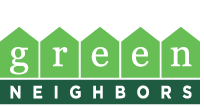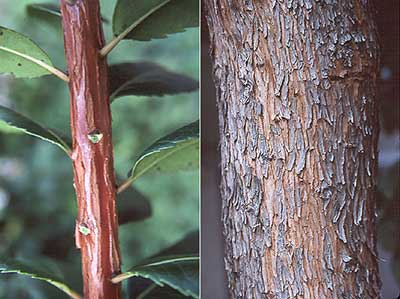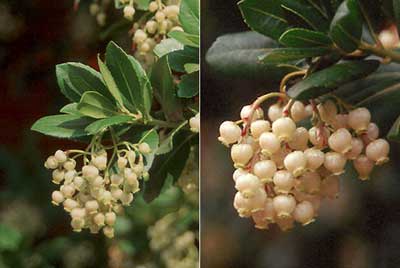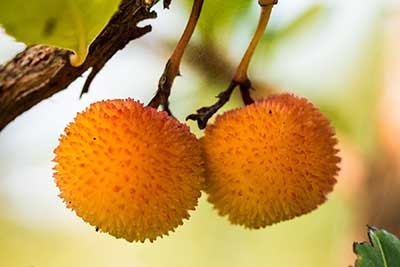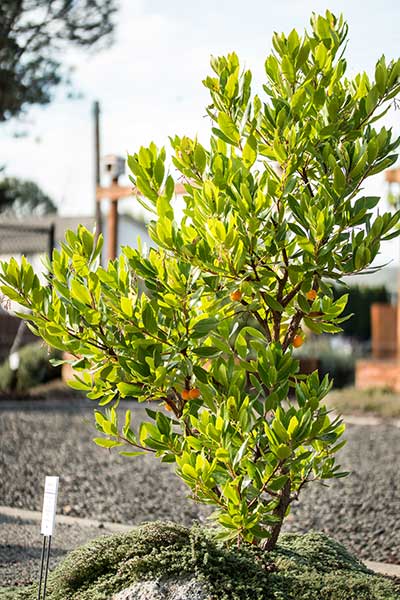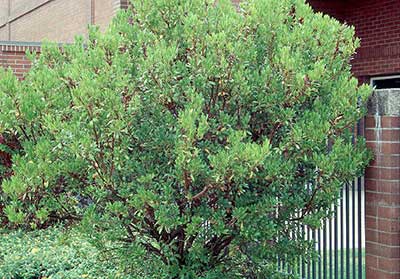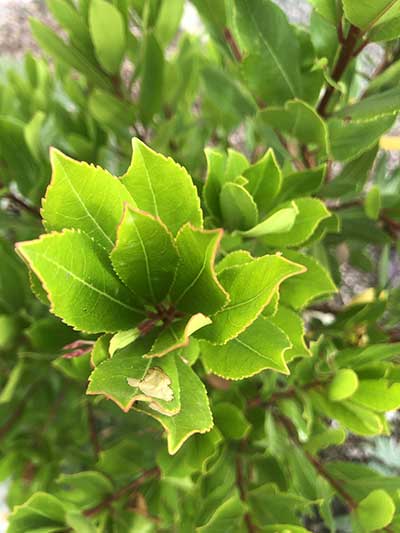Strawberry Tree
- Scientific Name: Arbutus unedo
- Garden: Edibles and Herbs Garden
- Plant Type: Tree
- Evergreen/Deciduous: Evergreen
- Sun/Shade Exposure: Full Sun or Part Shade
- Moisture Requirements: Dry
Plant Information
Strawberry tree is an evergreen broadleaf shrub or small tree with a spreading, picturesque habit, that is known for its orange-red spherical fruit (color of strawberries) borne on the limbs in the fall. Morphology: The strawberry tree grows to be 15'-30' in both height and width. While it can be left on its own to form a very large shrub, it can also have its lower limbs removed in order to shape it into a small garden tree. The spreading limbs bear simple, alternate leaves, which are 2”-5” long with serrated edges. The upper surfaces of the leaves are a very glossy dark green color, while the undersides are paler. The limbs are clad in a gray-brown bark that peels and flakes to reveal a reddish bark beneath. With time the tree takes on a distinctive shape with gnarled trunks and branches. During fall the strawberry tree will form very pretty clusters of white to pinkish, 2” long flower clusters comprised of urn shaped inverted flowers, resembling those of a highbush blueberry plant. It is from these flowers that the red fruit arises. Over the course of a year these fruits ripen. While they do become edible with time, they still remain tough and never really do develop a good flavor. None-the-less the birds will soon discover the berries and feast on them all winter. Adaptation: Strawberry trees grow slowly. They prefer a well-drained acidic site, with either full sun or partial shade. Once established they are considered entirely drought tolerant. Pests: None reported.
Data Source
https://www.pnwplants.wsu.eduPlant Photos







